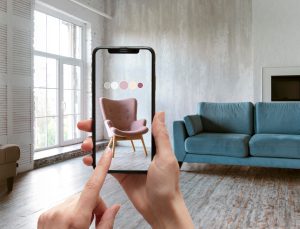
Hello, Architects and Designers,
I’m Maor Greenberg, and in the rapidly evolving world of architecture, facing design challenges is inevitable. However, technology is here to help. Virtual Reality (VR) has revolutionized how we approach design problems, providing innovative solutions that elevate our creativity and efficiency. Here’s a deep dive into how VR helps overcome various architectural design challenges.
Enhancing Spatial Visualization
Designing complex structures with intricate spatial relationships can be challenging using traditional 2D or even 3D renderings. VR takes spatial visualization to the next level by immersing architects and clients in a virtual environment where they can walk through and experience the space in real time. This leads to better design decisions and a clearer understanding of how the final structure will look and function.
Practical Example
Recently, we faced a project where we needed to design a multi-level commercial space. Our initial design on paper seemed flawless, but when experienced through VR, we noticed flow issues that were hard to spot in a flat drawing. By walking through the space virtually, we adjusted the layout for improved navigation and space utilization.
Facilitating Efficient Collaboration
In architecture, effective collaboration between architects, engineers, and clients is crucial. VR provides a shared space where stakeholders can discuss designs in real time, regardless of their physical location. This seamless communication leads to more effective collaboration, reducing misunderstandings and ensuring everyone is aligned on the project vision.
Practical Example
In a recent project involving multiple stakeholders across different countries, VR enabled us to host virtual walkthroughs that brought everyone into the same virtual space. This helped us identify potential conflicts and discrepancies in real time, ensuring that all parties were on the same page and reducing delays.
Streamlining the Design Process
Designing complex structures often involves multiple iterations, each time requiring significant changes to plans. VR accelerates this process by allowing architects to make real-time adjustments and visualize the impact instantly. This immediate feedback loop reduces the time spent on design revisions and helps identify errors early in the process.
Practical Example
In one of our urban development projects, the design team used VR to experiment with different facade materials and layouts. The instant visualization allowed us to iterate quickly, testing various options and settling on the most efficient design much faster than traditional methods.
Improving Client Communication
Conveying design ideas to clients who may not be familiar with architectural jargon can be challenging. VR breaks down these barriers by providing an immersive experience that clients can easily understand. This leads to better feedback, fewer misunderstandings, and a smoother approval process.
Practical Example
While working on a luxury residential project, our initial designs struggled to resonate with the client through traditional renderings. By presenting the design in VR, the client could walk through their future home virtually, providing feedback and making informed decisions that led to a more satisfying final design.
Reducing Costs and Rework
Mistakes in architectural design can be costly, often requiring expensive rework. VR helps minimize these costs by catching errors early in the design phase. By providing a more comprehensive understanding of the design, potential issues are identified and resolved before they become costly problems.
Practical Example
In one hospital project, the initial design had accessibility issues that weren’t immediately apparent in the plans. By using VR, we discovered these issues early and redesigned the entrances, saving significant costs and ensuring compliance with accessibility standards.
Conclusion
Virtual Reality is transforming how we overcome design challenges in architecture. Its ability to enhance spatial visualization, improve collaboration, streamline design processes, and reduce costs makes it an invaluable tool for architects and designers.
If you’re ready to integrate VR into your design process and start overcoming challenges like never before, reach out to VRchitects. Let’s embrace the future of design together.





